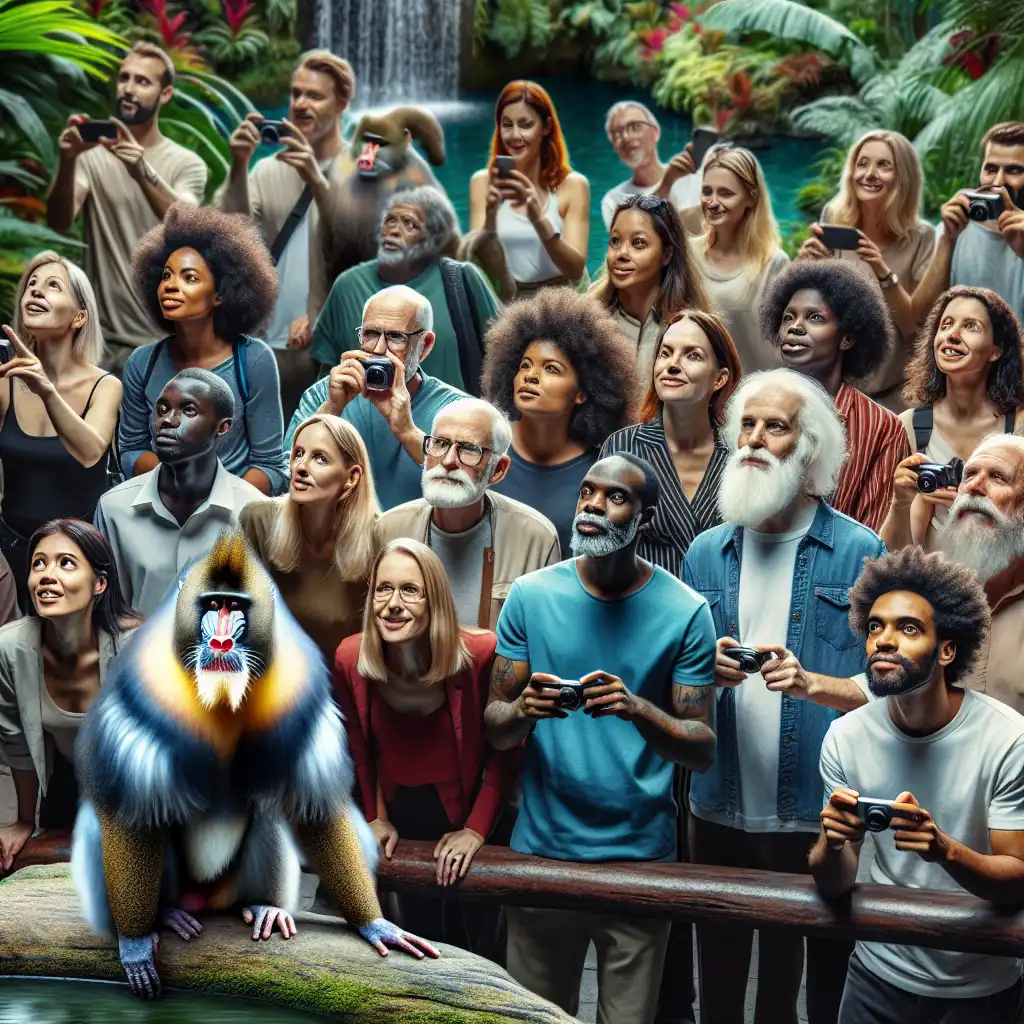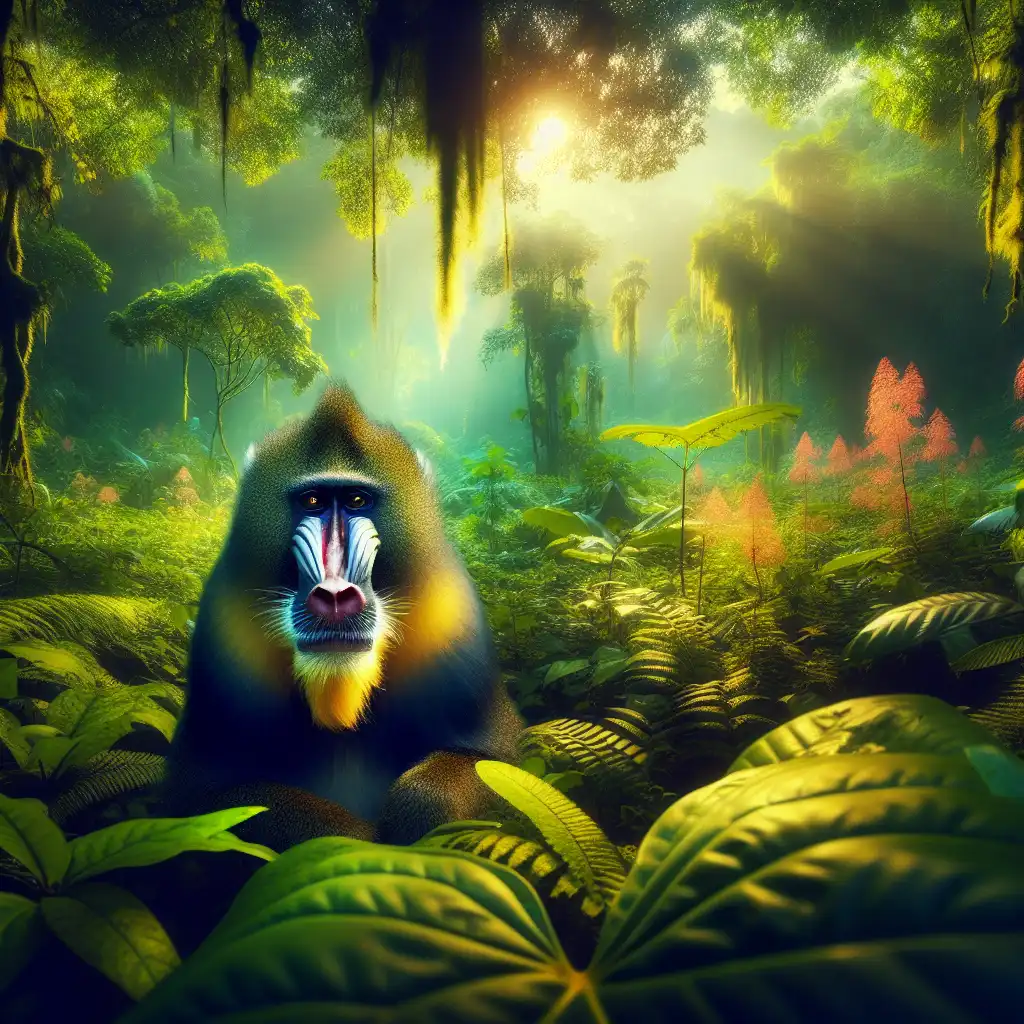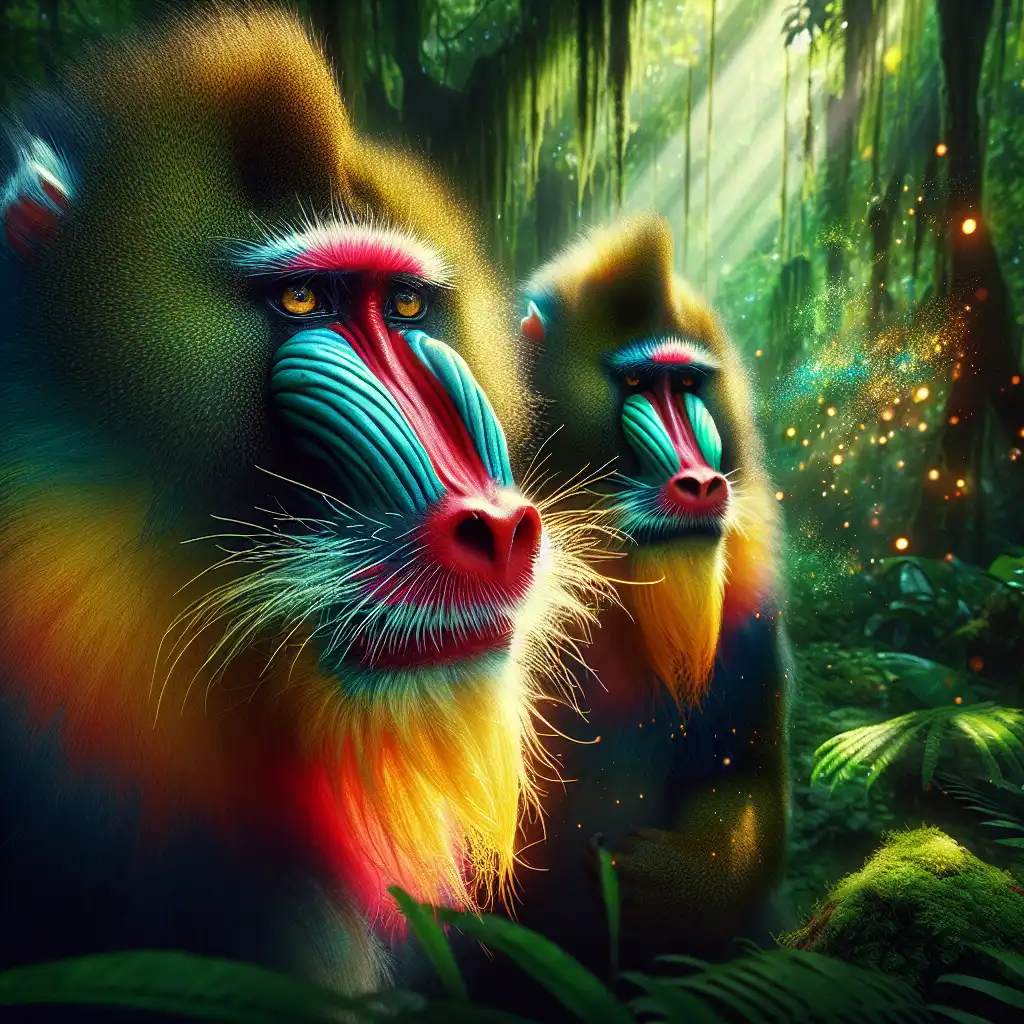
Mandrill
Visual Distinction
Mandrills are easily recognized by their vibrant face and rear colors not shared with other primates.  When visiting the zoo, we spotted a mandrill, unmistakable with its vivid blue face.
When visiting the zoo, we spotted a mandrill, unmistakable with its vivid blue face.
Geographic Native
Mandrills primarily live in Central Africa, so mentioning them implies a reference to African wildlife.  Documentaries on Central African fauna often feature the mandrill in their natural habitat.
Documentaries on Central African fauna often feature the mandrill in their natural habitat.
Gender Differences
Male mandrills are larger and more colorful than females, a distinction that could come up in discussions.  The male mandrill's bright colors are more striking than those of the female, aiding in identification.
The male mandrill's bright colors are more striking than those of the female, aiding in identification.